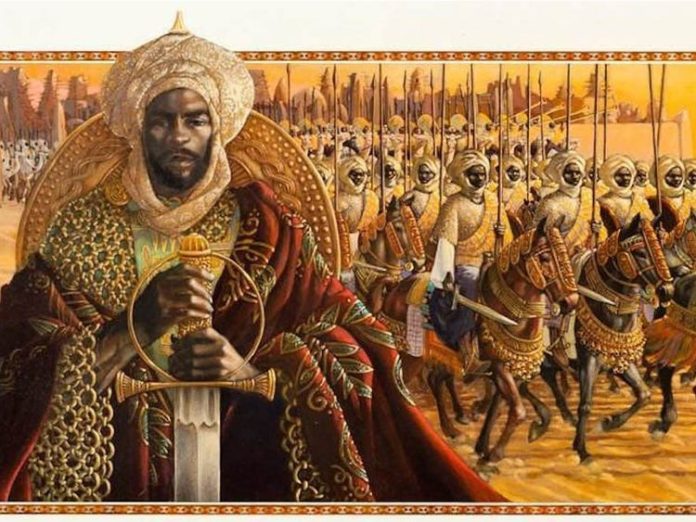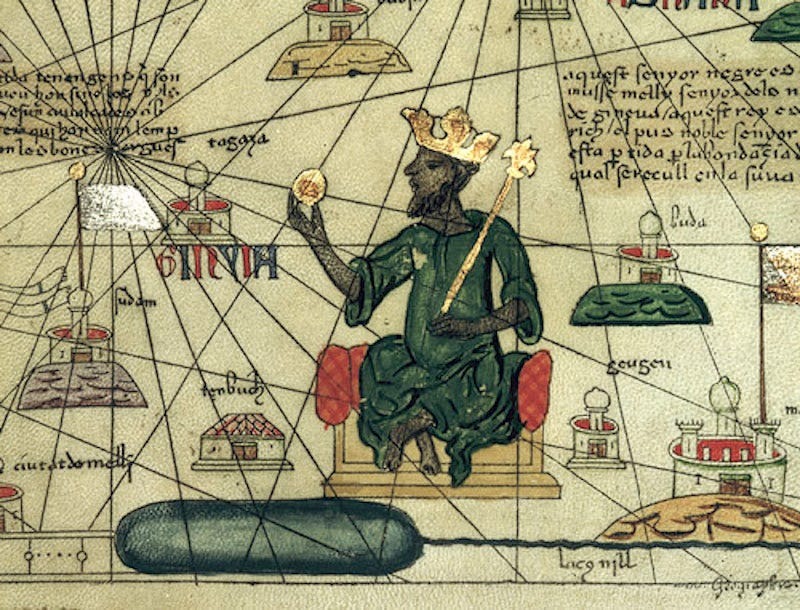The word ‘Mansa’ is Mandinka for ‘sultan’ or ’emperor’. In 1312 C.E., the previous Mansa, Abu Bakr II, disappeared at sea aboard a large fleet of ships that set out to explore the Atlantic Ocean. Mansa Musa inherited a kingdom that was already wealthy. At this point, most of Europe was struggling financially due to a decline in gold and silver production.
Most of Musa’s riches came from mining significant salt and gold deposits in the Mali kingdom, as well as elephant ivory. His work in expanding trade made Mali the wealthiest kingdom in Africa. He was also a successful military leader that was able to capture 24 cities, annex the city of Timbuktu, and reestablish power over Gao.
For reference, Mansa ruled over modern-day Mauritania, Senegal, Gambia, Guinea, Burkina Faso, Mali, Niger, Nigeria, and Chad.
In 1924 C.E., Mansa Musa performed what can only be described in the present day as the greatest flex of all time. To fulfill one of the five pillars of Islam, Mansa Musa set out on a 4,000-mile (6,400-kilometre) pilgrimage (hajj) to Mecca with a 60,000-strong caravan. Complete with 1,000 attendants, 100 camels each loaded with 136 kilograms of gold, his personal musicians, and 500 slaves bearing gold staffs, this journey spread the news of his wealth throughout the Mediterranean.
It literally put him on the map. The Catalan Atlas, created in 1375 C.E. by Spanish cartographers, depicts Mansa Musa sitting on a throne, holding a nugget of gold in one hand and a golden staff in the other. It was here that Mansa Musa became forever cemented in the global imagination as a figure of inconceivable wealth. It’s understandable considering how much he gave out on his journey. Mansa Musa was known to frequently bestow gifts upon dignitaries that he met with, including the Sultan of Egypt.
On his stop in Cairo, he gave so much gold out to the poor that it caused mass inflation for the next 12 years. The trip also prompted the Portuguese naval raids of Mali that would begin in the 15th century.
But the king’s riches were only an aspect of his overall story. On top of being stupidly rich, he was also a man of faith, education, and philanthropy. After his return from Mecca, Mansa Musa began to revitalize cities in his kingdom. He built mosques and large public buildings such as the legendary Djinguereber Mosque in Timbuktu, which still stands.
When Mansa Musa died in 1337 C.E, he was succeeded by his sons. Though the empire would eventually fall apart, his administration was able to leave it in a dominant state at the time of his death. Since accounts of his wealth stem from centuries-old testimony, it is impossible to know for certain how wealthy he truly was.
There is the possibility that some stories about the man were exaggerated at this time. We are left to only imagine what an appearance from Mansa Musa on The Joe Rogan Experience would entail.




